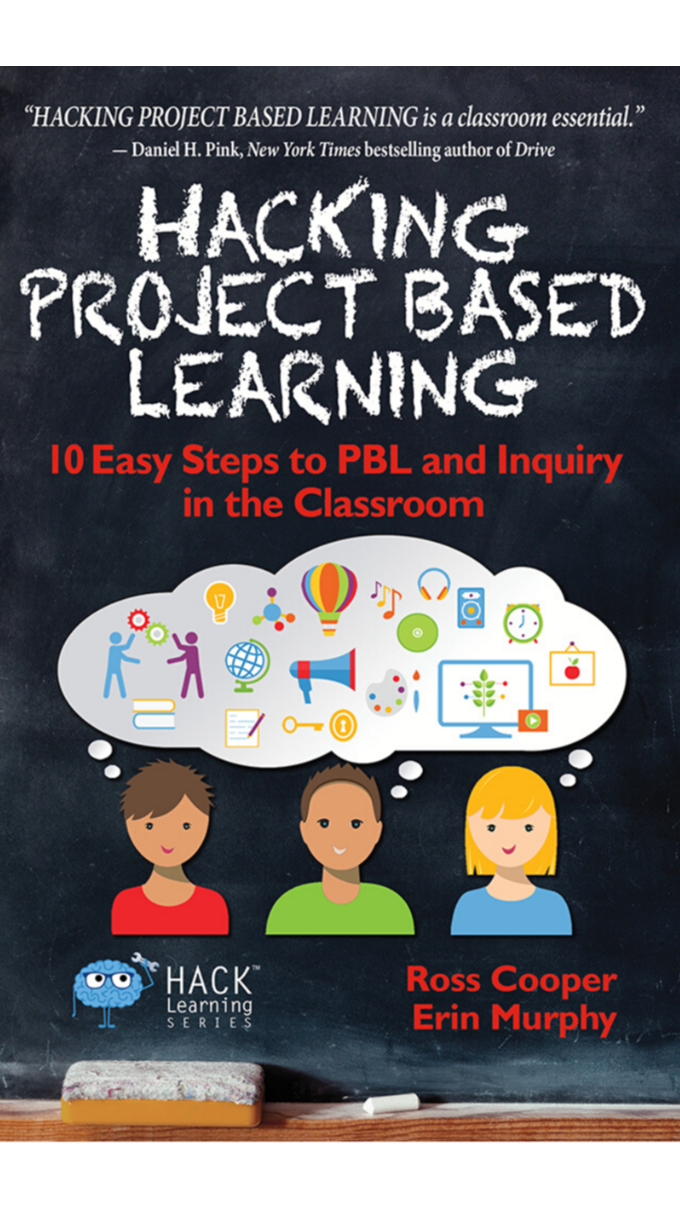If you are curious about implementing hands-on learning strategies in your classroom, Times 10 Publications has published “Hacking Project Based Learning” to make the process easy and quick.


Managing student attention can be one of the most difficult aspects of teaching, especially when practicing a traditional curriculum. The fact of the matter is that it is impossible to get students to truly and deeply engage with something that they have no real interest engaging in, and methods to build that interest form the basis of most ongoing pedagogical debate.
One proposed solution to this problem is the implementation of project-based learning, or PBL for short. Studies have shown that PBL principles may be the key to helping children engage with the material they are learning on a deeper level.
However, this presents a new problem: what is the best way to build these foundational principles into a classroom-ready lesson plan?
Erin Murphy and Ross Cooper may have the answer to this question, and they have compiled their newly formulated model into their popular book, "Hacking Project Based Learning", a guidebook containing fully actionable advice, tips and strategies packaged in a convenient 10-step process.
To pick up your copy, visit https://www.10publications.com/HACKING-PROJECT-BASED-LEARNING
PBL focuses on nurturing the students’ curiosity through the exploration of real-world scenarios and practical knowledge application. Debates around the implementation of these ideas have been taking place since the system was first proposed, and Murphy and Cooper have sought to address many of the most common problems in this book with actionable solutions and shortcuts.
To browse other similar guides released by Times 10 Publications, visit https://www.10publications.com/project-based-learning-books
The tips presented in "Hacking Project Based Learning" focus on a student-forward approach, seeking to anticipate the needs and tendencies of children learning in a PBL environment. By doing so, you will be able to write better questions that focus on encouraging exploration and inquiry rather than memorization and a rigid logic system.
This knowledge will certainly be helpful if you are new to PBL, but will also be valuable if you already practice it. The shortcuts and hacks provided in the book may save educators of all experience levels from the unnecessary stress that can come from a poorly-implemented or incomplete PBL curriculum.
Murphy and Cooper, who are both experienced educators, have compiled this guide to help other teachers prepare their students for the outside world rather than for standardized tests. They believe that PBL fosters an awareness and curiosity about the world that a traditional system of learning simply cannot achieve.
One reader has this to say, “The book is written with a sense of urgency and clarity. I am even more motivated to get a greater handle on the purpose, and best practices of implementing a project-based learning classroom. Also, the authors provide so much support through schoology. This book is a must have; add it to the front shelf of your teacher resource library.”
For more teaching guides and other great publications, visit https://www.10publications.com
